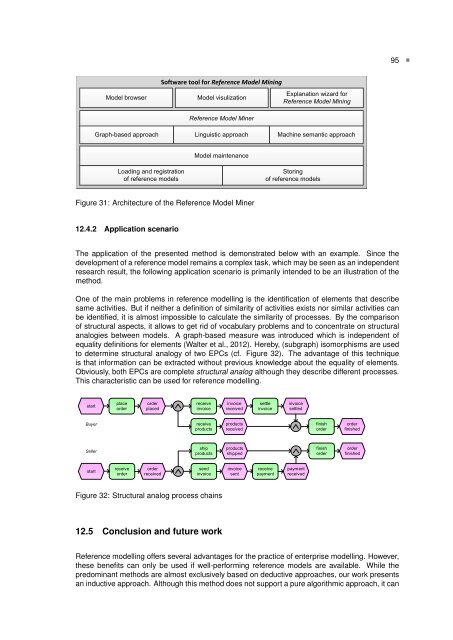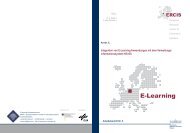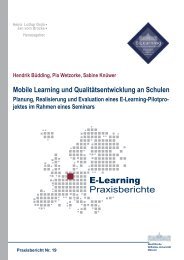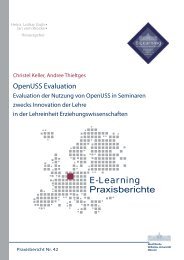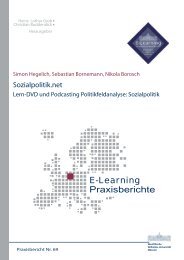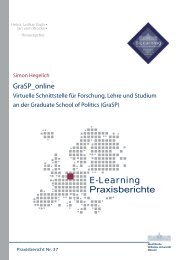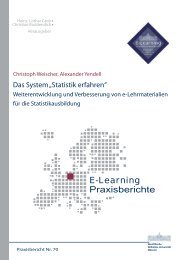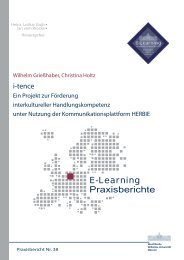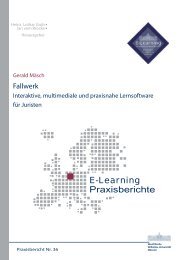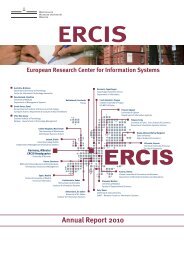Promoting Business Process Management Excellence in Russia
Promoting Business Process Management Excellence in Russia
Promoting Business Process Management Excellence in Russia
You also want an ePaper? Increase the reach of your titles
YUMPU automatically turns print PDFs into web optimized ePapers that Google loves.
95<br />
<br />
Model browser<br />
Software tool for Reference Model M<strong>in</strong><strong>in</strong>g<br />
Model visulization<br />
Explanation wizard for<br />
Reference Model M<strong>in</strong><strong>in</strong>g<br />
Reference Model M<strong>in</strong>er<br />
Graph-based approach L<strong>in</strong>guistic approach Mach<strong>in</strong>e semantic approach<br />
Model ma<strong>in</strong>tenance<br />
Load<strong>in</strong>g and registration<br />
of reference models<br />
Stor<strong>in</strong>g<br />
of reference models<br />
Figure 31: Architecture of the Reference Model M<strong>in</strong>er<br />
12.4.2 Application scenario<br />
The application of the presented method is demonstrated below with an example. S<strong>in</strong>ce the<br />
development of a reference model rema<strong>in</strong>s a complex task, which may be seen as an <strong>in</strong>dependent<br />
research result, the follow<strong>in</strong>g application scenario is primarily <strong>in</strong>tended to be an illustration of the<br />
method.<br />
One of the ma<strong>in</strong> problems <strong>in</strong> reference modell<strong>in</strong>g is the identification of elements that describe<br />
same activities. But if neither a def<strong>in</strong>ition of similarity of activities exists nor similar activities can<br />
be identified, it is almost impossible to calculate the similarity of processes. By the comparison<br />
of structural aspects, it allows to get rid of vocabulary problems and to concentrate on structural<br />
analogies between models. A graph-based measure was <strong>in</strong>troduced which is <strong>in</strong>dependent of<br />
equality def<strong>in</strong>itions for elements (Walter et al., 2012). Hereby, (subgraph) isomorphisms are used<br />
to determ<strong>in</strong>e structural analogy of two EPCs (cf. Figure 32). The advantage of this technique<br />
is that <strong>in</strong>formation can be extracted without previous knowledge about the equality of elements.<br />
Obviously, both EPCs are complete structural analog although they describe different processes.<br />
This characteristic can be used for reference modell<strong>in</strong>g.<br />
start<br />
place<br />
order<br />
order<br />
placed<br />
receive<br />
<strong>in</strong>voice<br />
<strong>in</strong>voice<br />
received<br />
settle<br />
<strong>in</strong>voice<br />
<strong>in</strong>voice<br />
settled<br />
Buyer<br />
receive<br />
products<br />
products<br />
received<br />
f<strong>in</strong>ish<br />
order<br />
order<br />
f<strong>in</strong>ished<br />
Seller<br />
ship<br />
products<br />
products<br />
shipped<br />
f<strong>in</strong>ish<br />
order<br />
order<br />
f<strong>in</strong>ished<br />
start<br />
receive<br />
order<br />
order<br />
received<br />
send<br />
<strong>in</strong>voice<br />
<strong>in</strong>voice<br />
sent<br />
receive<br />
payment<br />
payment<br />
received<br />
Figure 32: Structural analog process cha<strong>in</strong>s<br />
12.5 Conclusion and future work<br />
Reference modell<strong>in</strong>g offers several advantages for the practice of enterprise modell<strong>in</strong>g. However,<br />
these benefits can only be used if well-perform<strong>in</strong>g reference models are available. While the<br />
predom<strong>in</strong>ant methods are almost exclusively based on deductive approaches, our work presents<br />
an <strong>in</strong>ductive approach. Although this method does not support a pure algorithmic approach, it can


